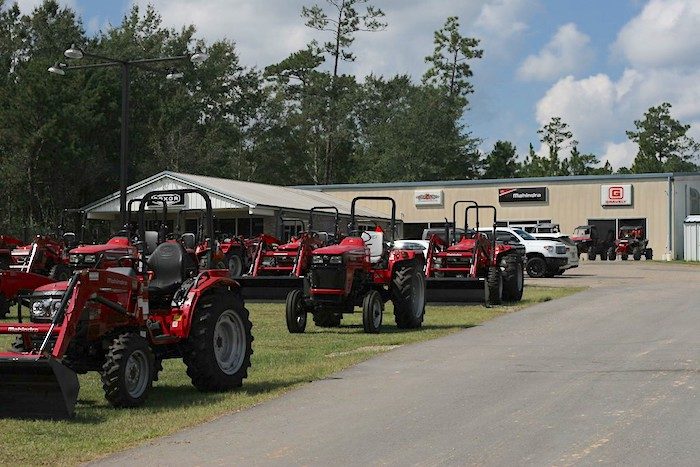Ranchland Tractor & ATV in Saucier, Miss., has conducted a remarkable turnaround, culminating with earning Rural Lifestyle Dealer’s Dealership of the Year in the single-store category. In less than 8 years, David Holman, a new owner from outside the farm equipment business, conquered the monumental challenge of a complete culture overhaul in an older, established dealership.
“As we grew, we added a parts manager, Joel Lal, and a service manager, Jason Baker,” Holman says. “Joel tries to maintain the flow of the right parts at the right time, which is almost impossible. You can usually get a part within 3 days, so we don’t do a lot of overnight parts. Jason stays on top of warranty claims and sends the parts back when manufacturers request it.”
Ranchland’s parts turn rate averages 4 times a year. “We have stale inventory that we inherited when we bought the dealership 7 1/2 years ago and it’s not getting more valuable. We need to determine if it’s worth putting on eBay or offering to another dealer. We do a good job with powersports and lawn mower turns, more so than tractor parts,” Holman says.
The dealership has been in business for a while, but has only sold a high number of machines under Holman’s ownership. “We do a lot of warranty work compared to other dealerships. It’s leveling out, but you don’t make much margin under warranty. Overall, 32-35% is where we tend to come out on parts margins on a monthly basis,” he says.
Holman admits service management is a weak area for him. “I’ve never worked in a shop, but Jason does a great job. We have a service writer who is also a technician and checks in customers, does diagnostics, lines up repairs and orders parts. We have probably more than 40 jobs at any given time and in the spring, it grows to 70-80. Our three technicians have their niche — diesel, small engine and ATV mechanic. They also all help each other and we’re cross training them as we go. We try to get OEM certifications for two people, the technician and either the service writer or service manager. I want them certified because it maintains stability.”
Holman says they’ve worked to improve the quality of the service they offer. “We used to have a lot of come-backs and there’s absolutely no way to make money that way. We’ve slowed down the process and emphasized diagnosing and fixing it right. Everybody wants their technicians to be at 100% efficiency, but if you can get into the 80% range, that’s awesome. We’re always watching technician efficiency and hours billed,” he says.
Holman’s shop is selective in accepting work. “We’re a new dealership and don’t put things together with duct tape and baling wire. If a customer comes in and that’s how he wants it repaired, we don’t want that job. When it leaves, we want to be proud of the work we’ve done. Finding technicians who balance saving the customer money while doing the job right, with the correct parts, is tough.”
Holman says keeping customers informed about repairs is important to service department success. “Most times when we have an unhappy customer, it comes down to a communication issue where we might have not ordered parts in a timely manner or called them about an estimate change. If you communicate properly, you can address 90% of issues. Our service department does a good job at that.”
“I think customers project how they’re treated,” Holman says. “If they don’t feel appreciated, then they come in with an attitude that they have to fight for everything. If you have a customer problem right off the bat, you have to drop everything, take care of the problem and get their product back as fast as you can. Otherwise, they lose confidence in a piece of equipment.”





